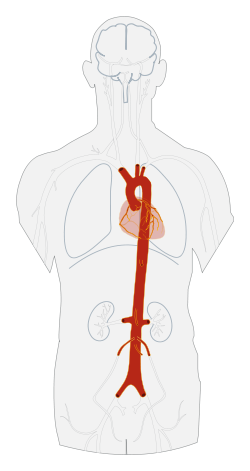This article is about the dietary recommendation that became popular in the 1990s. For food of the areas around the Mediterranean Sea, see Cuisine of the Mediterranean.
The Mediterranean diet is a modern nutritional recommendation inspired by the traditional dietary patterns of Spain, southern Italy, Greece and specifically the Greek island of Crete, and parts of the Middle East.
On November 17, 2010, UNESCO recognized this diet pattern as an Intangible Cultural Heritage of Italy, Greece, Spain and Morocco, thus reinforcing it not only as a fundamental part of their history and background, but also as a great contribution to the world. Despite its name, this diet is not typical of all Mediterranean cuisine. In Northern Italy, for instance, lard and butter are commonly used in cooking, and olive oil is reserved for dressing salads and cooked vegetables. In North Africa, wine is traditionally avoided by Muslims. In both North Africa and the Levant, along with olive oil, sheep's tail fat and rendered butter (samna) are traditional staple fats.
.jpg) The most commonly understood version of the Mediterranean diet was presented, amongst others, by Dr Walter Willett of Harvard University's School of Public Health from the mid-1990s on,including a book for the general public. Based on "food patterns typical of Crete, much of the rest of Greece, and southern Italy in the early 1960s", this diet, in addition to "regular physical activity," emphasizes "abundant plant foods, fresh fruit as the typical daily dessert, olive oil as the principal source of fat, dairy products (principally cheese and yogurt), and fish and poultry consumed in low to moderate amounts, zero to four eggs consumed weekly, red meat consumed in low amounts, and wine consumed in low to moderate amounts". Total fat in this diet is 25% to 35% of calories, with saturated fat at 8% or less of calories.
The most commonly understood version of the Mediterranean diet was presented, amongst others, by Dr Walter Willett of Harvard University's School of Public Health from the mid-1990s on,including a book for the general public. Based on "food patterns typical of Crete, much of the rest of Greece, and southern Italy in the early 1960s", this diet, in addition to "regular physical activity," emphasizes "abundant plant foods, fresh fruit as the typical daily dessert, olive oil as the principal source of fat, dairy products (principally cheese and yogurt), and fish and poultry consumed in low to moderate amounts, zero to four eggs consumed weekly, red meat consumed in low amounts, and wine consumed in low to moderate amounts". Total fat in this diet is 25% to 35% of calories, with saturated fat at 8% or less of calories.The principal aspects of this diet include high olive oil consumption, high consumption of legumes, high consumption of unrefined cereals, high consumption of fruits, high consumption of vegetables, moderate consumption of dairy products (mostly as cheese and yogurt), moderate to high consumption of fish, low consumption of meat and meat products, and moderate wine consumption.
Olive oil is particularly characteristic of the Mediterranean diet. It contains a very high level of monounsaturated fats, most notably oleic acid, which epidemiological studies suggest may be linked to a reduction in coronary heart disease risk. There is also evidence that the antioxidants in olive oil improve cholesterol regulation and LDL cholesterol reduction, and that it has other anti-inflammatory and anti-hypertensive effects



.jpg)
.jpg)

.svg.png)